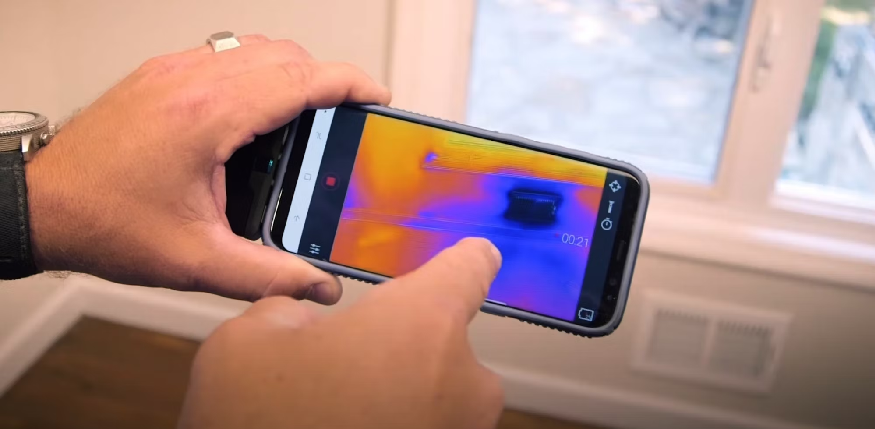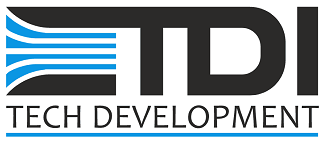Our view of the world is evolving thanks to infrared cameras. Many professionals are already taking advantage of the benefits of infrared imaging, from temperature checks in workplaces to property inspections in real estate. Why is this so? Infrared technology securely brings lurking threats and hidden objects into view.

Infrared or thermal imaging cameras are not the same as the cameras on your smartphone. While standard visible-light cameras photograph objects that emit visible light to the naked eye, an infrared camera records images of items that are invisible to the human eye.
All objects emit energy through specific invisible electromagnetic spectrum wavelengths.An infrared camera’s detectors pick up a particular range of invisible energy emission, between 700 and 1000 nm, then use complementary colors to indicate each heat value or wavelength. We refer to the final image as a thermography.Continue reading to discover more.
How infrared cameras work
A temperature correlation exists between an object’s amount of infrared radiation and its temperature. An object emits more infrared, the hotter it becomes. Unless the object is hot enough to create a glow of visible light, like molten metal, the only way to “view” temperature is through an infrared camera.
Thermal technology, like an iPhone infrared camera, employs sensors and thermal detectorsto determine the amount of infrared light in front of them. Sensors on board translate infrared impulses into electrical currents. These currents are then converted into a picture with color codes to display temperature and infrared light variations. The infrared camera presents a live infrared map, instantaneously highlighting varying temperatures.
This non-invasive diagnostic technique has shown to be quite successful in locating various problems, such as mechanical failures, electrical issues, and structural flaws.
Understanding thermal colors
Color palettes are valuable for seeing and comprehending thermal images because infrared light is invisible. The camera has hundreds of pixels and an infrared sensor. In the finished image, every pixel expresses itself uniquely by capturing the radiation that leaves the target area. The final image displays each pixel’s complete temperature.
A customized and assigned color map, often known as a palette, can visually depict the various wavelength emissions. For example, you can choose to have blue and medium yellow represent colder temperatures. Once analyzed, the total measurements from every pixel create a vivid RGB picture of a thermal image.
For instance, red and brilliant white represent the image’s hottest regions in most thermal images. The colors purple, blue, and green stand for lower temperatures.
Applications of infrared technology
There are numerous industrial uses for infrared cameras, including the following:
Fighting fires
When a building is on fire, firefighters can utilize thermal imaging to locate hotspots and decide the best line of action. It’s a helpful tool for finding victims caught in smoke.
Electrical installations
It is possible to assess various wires and connections concealed behind walls using thermal imaging. For instance, technicians can locate overloaded circuits, faulty electrical connections, or other faults that could cause equipment failure or fire hazards during electrical installations.Engineers can carry out repairs and identify issues by identifying active cables.
HVAC systems inspection
Infrared cameras help evaluate the efficiency of heating, ventilation, and air conditioning systems and locate blockages or malfunctions.
Identifying heat loss
Thermal imaging can be valuable for identifying damp areas and chilly regions when conducting building surveys. It is also possible to assess the building structure’s overall integrity using thermal technology.
Health diagnostics
This technology helps detect changes in body temperature in healthcare settings, track blood flow, and diagnose disorders.
Veterinary checks
Infrared cameras allow veterinarians to identify hot patches in an animal’s joints that autoimmune diseases like arthritis might bring on without requiring surgery.
Manufacturing
Thermal imaging can identify hot and cold regions in an industrial setting to reduce risk and damage, identify the liquid level in opaque containers, and enhance quality control procedures.
Security
Law enforcement and police personnel can utilize thermal imaging to find offendersin dark, inclement weather or areas that are difficult to see, such as forests.
Industrial maintenance
Infrared technology helps inspect machinery and equipment for overheating or malfunctionsto prevent future breakdowns and guarantee operating efficiency.
Wildlife monitoring
Thermal technology helps track and examine the behavior of animals, particularly those that are nocturnal, by identifying their heat signatures in their natural habitats.
Agriculture
Analyzing farmland’s thermal patterns helps assess crop health, identify pests, and optimize irrigation.
Automobile sector
Thermal imaging can check for overheating in car parts and spot possible problems with the brakes, engines, and other systems.
Inspection of pipelines
Thermal imaging uses temperature changes to find leaks and structural problems in pipelines.
Operations for search and rescue
Infrared cameras help detect people in low-visibility environments, like heavily smoked, dark, or disaster-affected locations.
Environmental observation
Thermal technology is vital for investigating temperature variations for biological and climatic purposes in natural settings, such as woods, deserts, and oceans.
How to maximize infrared technology
Even though infrared cameras are incredibly accurate at detecting and projecting object temperature, several things must be considered to guarantee precise results.
First and foremost, there are differences among infrared cameras. Specific designs are more appropriate for medical or other uses, while others are more suited for industrial applications. Having the right tools and knowing how to operate the machinery is crucial. For instance, users must adhere to the ISO 13154 standardfor correctly using cameras intended for medical purposes.
Secondly, you also need to consider the surrounding conditions when using infrared imaging cameras. To accurately estimate the radiated heat from the photos, you must consider external factors like the sun, shadows, cold weather, rain, wind, or even internal HVAC systems.
Thirdly, the rate at which an object emits infrared energy is known as its emissivity, which is another factor to consider. You can reduce errors by allowing for these through camera body settings.
conclusion
The ability of infrared cameras to precisely detect even the slightest variations in heat and the infrared radiation that all objects generate, regardless of the lighting, makes them useful in various applications in different industries.




